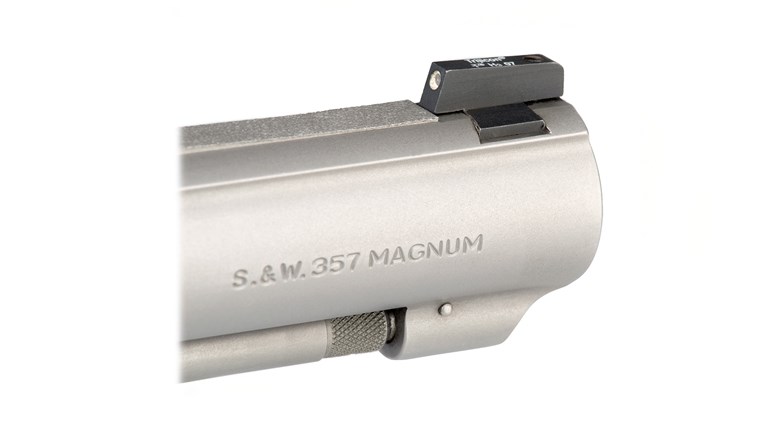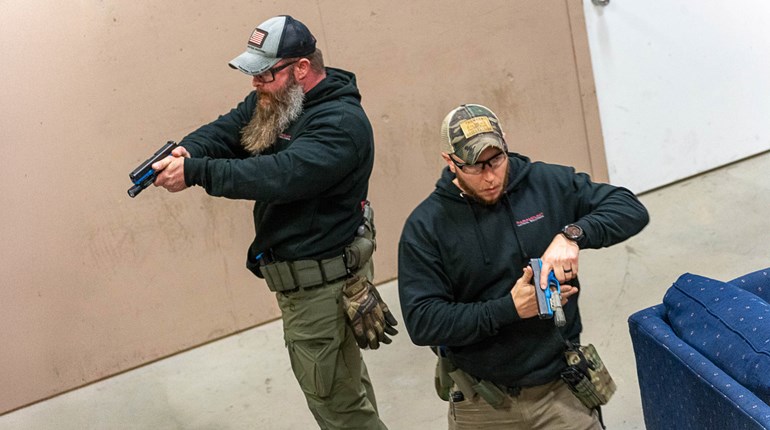
While under tension, the striker spring on the Glock system is held in place by the striker safety (above). When the trigger is pulled, the trigger bar moves the striker safety up, allowing the striker to move past its recessed shaft (below).

I stopped carrying my striker-fired pistol when I realized with a cartridge in the chamber the firing-pin spring was under constant tension, which could create metal fatigue in the firing-pin spring. As a former USNR Aviation Ordnance 3rd Class, I had been schooled in the danger of metal fatigue in .50-caliber and 20 mm guns aboard the aircraft. These weapons are usually empty except just before battle, but metal fatigue was a concern. It seems strange with the abundance of striker-fired firearms there is not more discussion of this. Most of the people I know who carry such handguns keep a round in the chamber, as racking the slide slows one’s ability to respond accordingly in a life-threatening encounter. These striker springs are under constant tension and create a possible unsafe firearm due to metal fatigue. Also, I have not seen a striker-fired handgun where the process of swapping out the striker spring is easy. Any insight regarding this would be greatly appreciated.
Don Stark, via e-mail
Thank you for your question, as I’m sure your concern is shared by many of our readers, who are some of the most-informed individuals in the firearm field. In my research regarding springs and spring life over the years, I have found that properly made springs have a service life significantly beyond what you might think. For instance, I have in my inventory a very early Glock G17 and a first-production G19 that came as a test gun, both with thousands of rounds through them and the original springs throughout. I have owned and shot each gun for more than 30 years—and have no reservation carrying them today—with the firm belief they will rise to the occasion if/when called to do so. I also know of a Smith and Wesson M&P Shield that has in excess of 20,000 documented rounds through it without striker-spring problems.
As you may or may not know, the difference between the two aforementioned pistols regarding striker springs is the Glock striker is only partially cocked with the slide forward and ready for business, while the equally popular Smith & Wesson M&P striker is fully cocked when the slide is in the forward position. Examples of fully- and partially-cocked striker systems can be found in other brands manufactured in the United States and other countries throughout the world. Neither method seems to have an advantage over the other, at least when speaking from a metallurgical perspective.
In doing a cursory check with some of my firearm-industry factory contacts, law enforcement/military armorers and professional gunsmiths I know, none are concerned with metal fatigue in or failure of the striker springs in the guns they manufacture or service. None of these individuals have ever seen striker-spring fatigue or breakage in a properly maintained pistol.
While naval aviation may have had some basis to be concerned with its .50-caliber machine guns and 20 mm automatic cannons aboard aircraft, I think with the information above, you can put your mind at ease and go back to carrying your favorite striker-fired handgun with the confidence that it will not fail and the expectation that it will indeed perform should the need arise.



































